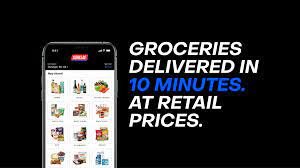The rise of ultra-rapid grocery delivery players (aka Q-Commerce)
Quick-Commerce (friends call it Q-Commerce) is rapidly gaining momentum across Europe. Ultra-rapid delivery start-ups are now attracting new funding and are expanding in major cities such as London, Berlin, Paris, Madrid, Milan.
How it started
Most of these players were born in 2020, during the pandemic, in densely populated areas like Berlin (Gorillas), Istanbul (Getir), London (Weezy), Paris (Cajoo). Given the lockdowns and restrictions, these start-ups were focusing on the customers’ need for easier access to primary household goods and food. After this first wave, investments started to pour on them like rain (Getir raised $ 1 billion in total and Gorillas just closed a $ 1 billion round) and now we are witnessing the second phase of strong expansion at European and worldwide level.
The model
We say ‘ultra-rapid’ since their core strategy is to deliver groceries in 10-15 minutes (see Gorillas statement below) and they can do this by acting as uniquely vertically integrated retailers:
They source products directly from manufacturers or, if not possible, they source from main retailers so as to exploit economies of scale and to improve the offer;
Distribution is made through a network of dark stores, micro-fulfillment centers spread around the city that cover strategically the main areas of a city within 10/15 minutes;
They manage internally the picking, packing, and delivery activities thanks to an internal network of store managers and ‘riders’;
Of course, none of this can be done without top-notch technology and automation that helps with operations and inventory analysis.
Expansion phase
In this second phase of expansion two main trends are taking place: geographical expansion and acquisitions.
For the first one, it is not a surprise if the major cities continue to be the main focus of q-commerce players, given the limit of 10-15 minutes delivery and the high concentration of population that implies a high frequency of orders. After the expansion in the UK, Germany, France in September 2021 Getir opened also the Spanish (Madrid and Barcelona) and Italian (Milan) markets. While Gorillas, as of now, is present in eight countries with an ongoing expansion also in the US.
For what concerns acquisitions, given that the business is really capital-intensive, many players are struggling in generating profits so the biggest ones are expanding also through acquisitions. In particular, GoPuff acquired Fancy (May 2021) and Dija (August 2021) to open operations in the UK, France, and Spain. Getir acquired Weezy (November 2021) in UK and Blok (July 2021) in Spain.
Opportunities and risks
Let’s analyse now opportunities and risks that this trend brings for companies and suppliers:
CHALLENGES and RISKS
Limited assortment (vs other retailers) focused on top-selling products. Suppliers should choose which products are mainly suited for this channel;
A fragmented market that still needs to secure a lot of funding. Long-term planning is still not certain;
Product content might be lacking, which can harm the brand and complicate the creation of industry standards. Conversion could become mainly based on convenience;
Retailers are under pressure to meet increased customer expectations for convenience and speed, putting additional pressure on supply timeframes and inventory turnover;
Potential exploitation of data and direct engagement of customers to create their own private labels;
Increased competition from traditional retailers who can develop their own service (e.g. Ocado Zoom) or create new partnerships;
OPPORTUNITIES and BENEFITS
New touchpoints to attract young customers (Gen Z and Millennials);
Opportunity to differentiate offers and create unique value for new customers;
New marketing opportunities can be achieved through new activities. Suppliers might need to re-assess their marketing strategy;
Global players that could be easily engaged with a common approach;
Additional data and insights on shopping behaviors;
Brands can measure the effectiveness and impact of investments and promotions faster than conventional retailers;
Increase online growth and penetration;
In conclusion, Q-Commerce players are probably here to stay but the main question that remains as of today is “who will survive?”. What is certain is that they represents a disruptive trend and new opportunity for companies to review their growth drivers (especially for the online channel) and build new digital marketing and digital shelf capabilities.
